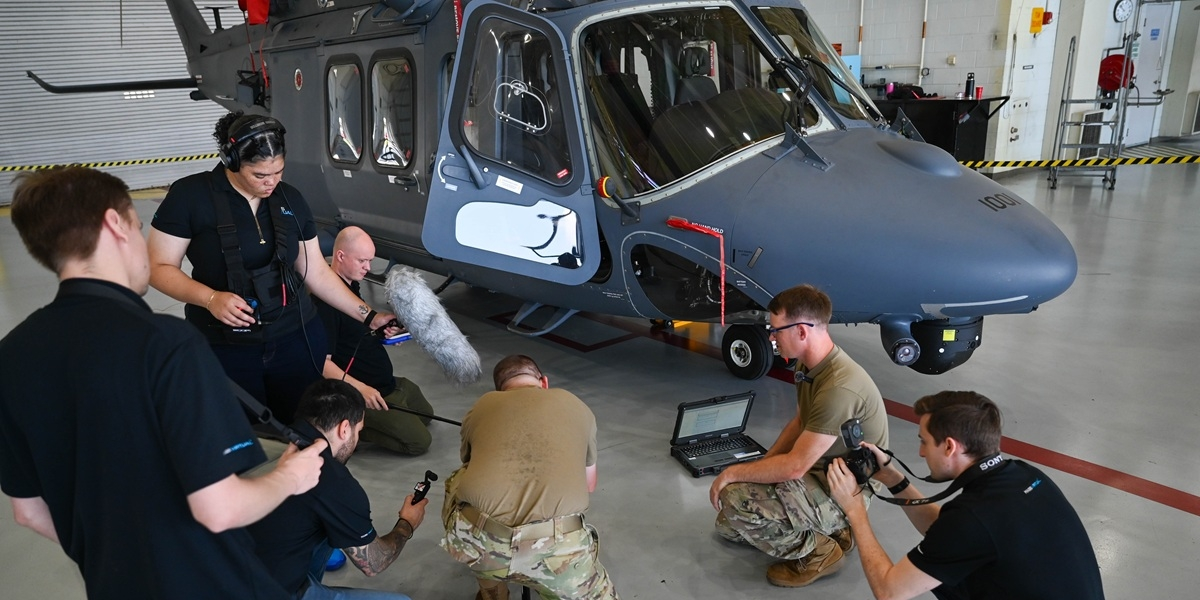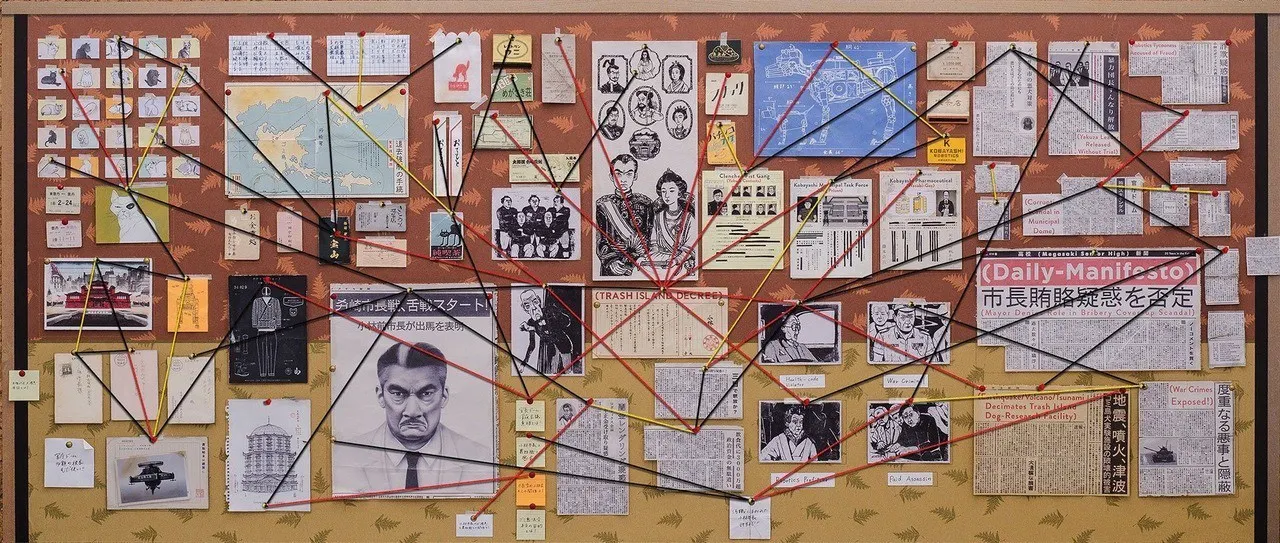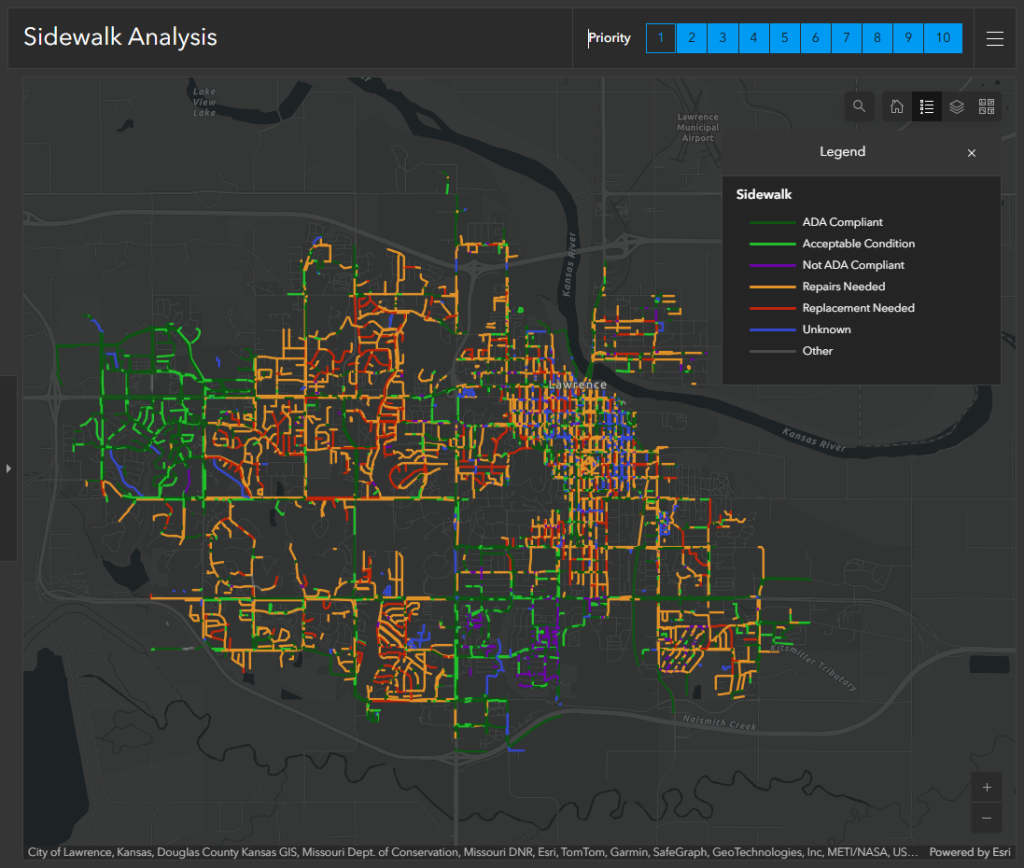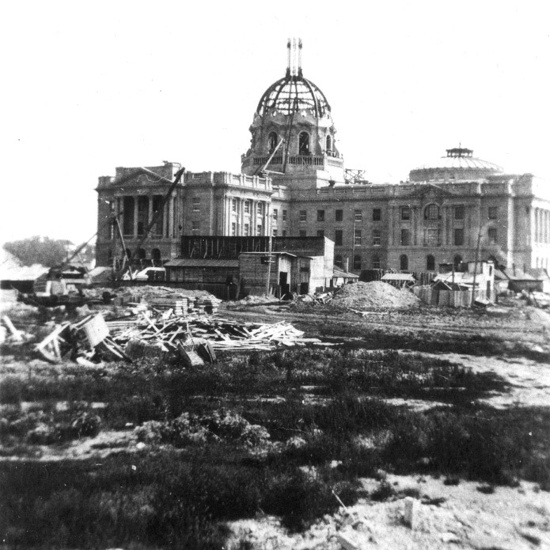

At ease Re/Cappers, we get militaristic today with a lead story that produces more LiDAR, photogrammetry, and VR than Navy SEAL hell week produces stress hormones.
The use case pertains to helicopters. This is hysterical, ‘cause the first VR head-mounted display did too!
We’re talkin’ the mid-1960s, when in the dimly lit corners of a college laboratory, a curious contraption loomed overhead: a tangled frame of wires, motors, and metal suspended from the ceiling, threatening to bonk any curious onlooker who strayed too close. This was the "Sword of Damocles," conceived by Ivan Sutherland & his student Bob Sproull - and eventually developed at Bell Helicopter - as a watershed moment for immersive digital interaction.
Sutherland, already renowned for pioneering computer graphics with his Sketchpad system that was sorta an early predecessor to modern CAD systems, was dissatisfied with flat, static computer screens. He envisioned a head-mounted system that could overlay virtual images onto the real world and update them in real-time as the user moved. Strapped into the apparatus due to its imposing weight (hence the evocative name) and unwieldy design, users saw stereoscopic wireframe 3D graphics that shifted perspective with each turn of the head.
The idea was promising enough to fetch that yummy CIA funding. It embodied Ivan Sutherland’s visionary quest for what he called the “ultimate display”, a world where computers could seamlessly blend synthetic images with our physical reality, ushering in new ways to interact with information and environments. And he manifested it. The augmented reality experience was here, as the headset was partially see-through, blending digital and physical views.
So what became of this ceiling-mounted marvel, heavy enough to double as equipment for Mike Tyson neck exercises? The SoD never left the lab, remaining a remarkable (if unwearable) curiosity and proof of concept. It did not evolve into a commercial product or practical training tool; in fact, its original incarnation exists today only as a celebrated historical artifact and a talisman of XR’s origins. But the reverberations of Sutherland’s experiment shifted the entire landscape: the ideas he pioneered inspired generations of engineers, designers, and tinkerers.
And it all started with a sword hanging overhead, asking the daring question: what if reality was just the beginning? The laughs and jolts from that first unstable headset test echo on, alive in each new generation of military XR tech we’ll soon cover, each virtual rotor spun, and every confident maintainer’s hand tracing the ghosts of the past into tomorrow’s skies.
That, of course, is one how garners the accolades possessed by Dr. Sutherland - a man who, quite literally, saw the future.
What’s Cappenin’ This Week
Quick ‘Caps
For the military, it’s a logistical obstacle course, one the most sadistic drill instructor couldn’t concoct:
Ensure critical aircraft maintenance skills are ingrained, without grounding assets or compromising safety.
Though reservists are often limited by scarce hands-on opportunities, Maxwell Air Force Base’s integration of LiDAR and photogrammetry into an XR training platform offers a glimpse into the future of ATTEEEEEN-TION to aircraft detail.

The 908th Aircraft Maintenance Squadron, Mass Virtual, and the MH-139A Grey Wolf helicopter. Image credit Yellowhammer
The Alabama base’s 908th Aircraft Maintenance Squadron is augmenting MH-139A Grey Wolf helicopter maintenance, in collaboration with Mass Virtual. The team used LiDAR scans and photogrammetry to create picturesque 3D digital replicas of both components and maintenance procedures.
This process covered 19 out of 44 critical tasks ranging from changing a rear tire to attaching a tow bar and taxiing the aircraft, capturing not only visual data but also sounds, videos, and narrated explanations for each operation. The objective is to provide 908th AMXS with virtual hands-on training that closely simulates real-world procedures, enabling repeated practice without removing the aircraft from active flight schedules.
“Every time we touch this aircraft, other people’s lives are at stake,” Master Sgt. and head maintainer Jason Gessler said. “The more training avenues that we have, outside of just being on the aircraft, the better for us, especially for our reservists that do not get to be hands on every day.”
The publication Yellowhammer (a ‘Bama state nickname) gathered about as much intel on the tech op as Bin Laden’s compound had. Linked below is its full form, with exploration of the Air Force’s Integrated Technology Platform, future maintainers & mechanics, the Department of Defense tech emphasis, and a bounty of quotes from the heroes of the 908th AMXS and wizards of Mass Virtual.
There’s that obligatory scene in every cop show or film - the “wall” of evidence, adorned by Post-its, notecards, and photos, all united by strings & tacks.
Detective is flustered, frustrated, fatigued. Detective either A) unleashes a cathartic scream, likely accompanied by throwing inanimate object, or B) buries head in hands, with deep, somber sigh.
Then, the moment. A lightbulb goes off because of something on that board, that repository of “old” information.
That is not unlike what can happen with the system of record for old BIM data, if it’s approached correctly. And an outstanding new guest piece in AEC Magazine majestically meditated on it.

Old BIM data - where does it all lead?! Image credit Phil Gyford via Medium
The editorial, “BIMnesia: BIMnesia: what your models forgot and why it matters,” comes from the mind of Skema co-founder and BIM/AEC savant, Marty Rozmanith. It professionally and transparently acknowledges the self-promotion, but still discusses limitations in traditional BIM practices, particularly how BIM files often become static repositories over time, losing accessibility and practical value.
AEC Magazine’s exquisite hosting job is linked below, where you’ll find Rozmanith examine data reusability, “solver architecture,” AI in hardware and software development, curating design intelligence, toolchains, new forms of BIM data transformation, SketchUp/Rhino/Revit, data privacy & IP, and a trove of other topics.
Authentic. Realistic. Live. Stable.
No, these are not the four most desirable traits from a new Bumble survey. Rather, they are the four qualities a research squad demanded from the final form of their brazen project - authentic 3D video calls from live Gaussian splat prediction via standard 2D webcam.
Unlike existing 3D meeting solutions that rely on complex hardware, fixed appearances, or pre-trained generative models, this reconstructs a realistic 3D volumetric representation of a person from live 2D video frames independently.

The paper titled "VoluMe – Authentic 3D Video Calls from Live Gaussian Splat Prediction," is slated to be presented at the 2025 International Conference on Computer Vision by Microsoft Research. Linked below is the full scoop expounding on why virtual 3D meetings matter, novel viewpoints, stability metrics, and more - courtesy of Microsoft’s research nexus. Get the Github publication here.
Curb Your Enthusiasm was a colossal hit for HBO.
But for Lawrence, Kansas and Douglas County, Nebraska, not curbing their curb enthusiasm has proved to be their own smashing success, as part of a larger infrastructural crusade.
And it was all ignited by a suite of tech adoptions.

Esri color-coded magic, kinda like that terror threat system; only these frights come from shoddy sidewalks and catastrophic curbs. Image credit Esri via Statescoop
Rather than relying on traditional, tedious manual inspections that are sieves for time and money, these midwest locales pivoted to advanced GIS methodologies and LiDAR-equipped survey vehicles. The endgame? To quickly and accurately assess the condition of miles of sidewalks, and thousands of curb ramps.
Lawrence combined the results with demographic data like disability and senior population rates, using tools like Esri’s ArcGIS, helping prioritize repairs where they are most needed. Meanwhile, Omaha (in Douglas County) developed an AI model trained on images of curb ramps. This AI rapidly inventoried over 34,000 curb ramps in less than two weeks, a process that would usually take several months manually.
STATESCOOP got that scoop on the endeavor, including the Americans with Disabilities Act compliance, liability status, the 2021 project roots & vision, model rendering, the projected cost for the next two decades, increased public engagement, and more.

The early 1900s construction of the Alberta Legislature, topped with its infamous dome. Image credit Edmonton Historical Board
Some architectural mishaps make a big splash; others simply settle in for a slow, persistent drip like sap from a tapped maple tree.
Alberta’s Legislature dome, in all its neoclassical grandeur, managed to do both.
Opened in 1912 as the shining crown atop Edmonton’s prairie skyline, the Legislature was meant to symbolize permanence and progress. But just as the last coats of paint dried, cracks and bulges began to creep across its marble and terra cotta. Alberta wanted a dome that meant “forever”; what it got, at times, was closer to the world’s fanciest upside-down salad bowl - and one that just couldn’t stop springing leaks.
The trouble started below ground, as the building’s foundation famously sits atop a soft and shifting “quicksandy” layer. As seasons changed and the subsoil responded with the enthusiasm of a cold snap, the dome’s heavy masonry embarked on a slow parade of settlement. Mere months after opening, a “sharp crack” echoed above the Premier’s seat, releasing a hail of plaster onto the governmental proceedings. Meanwhile, moisture, invited in by the region’s freeze-thaw mood swings and some less-than-heroic flashing details, crept into the masonry and terra cotta. Roof lines collected - and failed to successfully shed - exploratory rain and snow, quietly undermining the structure with each passing year. These invisible forces forced generations of plasterers and stonemasons into annual, Sisyphean repairs.
The 1970s and 1980s saw these cracks metastasize into visible bulging of the dome’s terra cotta. Piecemeal stabilization using steel anchors and moisture management strategies bought the building time, but by its 100th birthday, the patchwork grew too large to ignore. Heck, a seven-week inspection discovered stones held together with everything from glue to wooden dowels, also achieving nine pails of loose/chipped stones. All in all, 18,000 (!) deficiencies were clocked. That might exceed the number of all-time hockey fights.
The province invested more than $10 million in an extensive restoration between 2012 and 2014, replacing every terra cotta tile on the domes, reworking water management, and creating a modern waterproof envelope. This meant capturing and replicating the original design, while adding building information modeling and digital documentation - tools undreamed of a century before…
Picture the original maintenance crew at the Alberta Legislature armed with today’s reality capture tech. Instead of binoculars and best guesses, they're wielding drones, lasers, and algorithms - all aimed at preserving one of Alberta’s most iconic structures before trouble has a chance to take root.
Drones equipped with LiDAR sweep over the dome and grounds, collecting billions of data points in precise 3D, seeing what eyes miss: tiny shifts, subtle sags, early warning signs of foundation fatigue.
Add in photogrammetry, perhaps some Gaussian splatting, and you get textured, true-to-life 3D models built from thousands of high-res images. You can see every crack, stain, and fleck of chipped paint in immersive detail. If LiDAR shows you the bones, photogrammetry shows the bruises.
Then there's thermal imaging, catching moisture intrusion and insulation failures before they cause visible damage. Pair that with structural health monitoring - sensors embedded in stone or metal that track vibration, strain, and temperature in real time - and you've got a building that speaks up before it hurts.
All of this feeds into a digital twin: a living, breathing model of the dome that updates with every scan, every season, every repair. It lets teams compare past and present side by side, spot trends, and make decisions based on data, not hunches. You don’t wait for plaster to fall during Question Period. You fix the problem before the plaster even thinks about it.
It’s not magic. It’s modern heritage management. A blend of laser eyes, thermal insight, and photorealism that turns one aging dome into a fully monitored, future-proofed landmark.
The only cracks echoing through the chamber? The ones in political debates.






By subscribing, you are agreeing to RCN’s Terms and Conditions of Use. To learn how RCN collects, uses, shares, and protects your personal data, please see RCN’s Privacy Policy.

Reality Capture Network • Copyright 2025 • All rights reserved